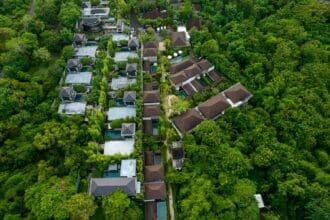Investing in real estate, especially on the international stage, is an endeavor that requires precise navigation and thorough analysis. PropertyFinder.BG aims to be your trusted compass on this journey, offering vetted projects, market analysis and practical guides specifically designed for Bulgarian investors seeking higher yields and/or golden residency visa opportunities abroad. Leading markets such as Dubai, Greece, Italy, Spain and Turkey are attracting with their good combinations of yields, price growth and favourable regulation, and there is already significant interest from Bulgarian buyers in each.
Understanding and accurately calculating property yields is a fundamental element of making informed investment decisions. While real estate in Bulgaria has traditionally been perceived as one of the safest investments, reality shows that yields in the local market may be declining. For example, for a home in Sofia, the current rental yield has fallen about twice in the last five years, averaging 4.32%. This trend is causing more investors to look beyond the country’s borders, seeking not just “security” but optimal yields at an acceptable level of risk.
Investing abroad, however, brings its own specifics and complexities – different legal and tax systems, currency risks, peculiarities in managing the property remotely. In this context, the ability to analyse all aspects of profitability becomes even more critical. This series of articles aims to provide a comprehensive guide to the methods of calculating property yields, the factors that influence them and the specifics of selected international markets to assist Bulgarian investors in their quest for successful and profitable investments.
What exactly are we measuring? Decoding the concept of “property yield”
At the heart of any real estate investment strategy is the concept of property yield, also known as Rental Yield. Generally speaking, rental yield indicates what percentage of the initial investment is returned to the investor on an annual basis through rental income. It is a key metric that measures a property’s ability to generate cash flow relative to its price or market value.
Calculating yields allows investors to objectively assess the potential profitability of different properties and compare them against each other before committing significant financial resources. The gross yield, for example, can serve as a quick initial filter – if it is unsatisfactory, the net yield (which takes into account costs) is likely to be even lower, which may signal that the property is not worthy of further consideration. If the potential return on a “gross” basis is insufficient to meet the minimum return thresholds specific to the real estate investor, then the likelihood that the return will be attractive on a “net” basis is almost nil.
It is important to note that while rental yield is a critical metric, it should not be the only factor when making an investment decision. The potential for capital growth (increase in the value of the property over time), the liquidity of the investment, tax advantages and non-financial objectives such as obtaining a ‘golden visa’ in certain jurisdictions also play a significant role in the overall evaluation of the investment. For example, in calculating the current yield in Sofia, the capital gain on eventual resale is usually excluded as it is not guaranteed. However, the combination of rental yields and expected price growth is what often attracts investors to certain markets. In the next articles of this series, we will take a detailed look at the main methods for calculating yield, the factors that influence it, and an analysis of the top international markets.
You might also like:
- Property in Alicante – a rising market on the Costa Blanca for smart investors
- UAE Commercial Property 2025: Office Market and REIT Funds Analysis
- The most profitable areas in Dubai for property investment
This post is also available in: Български







